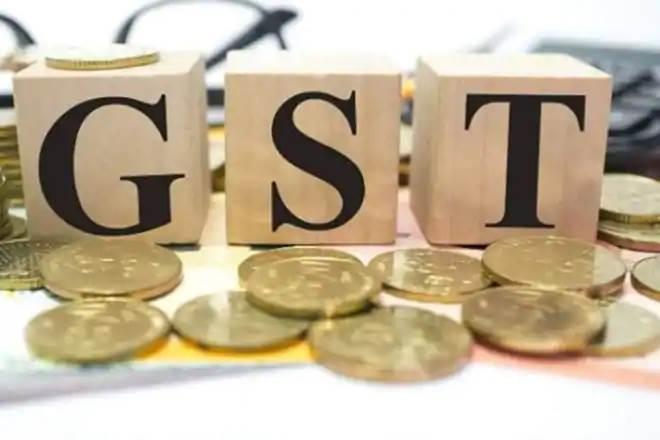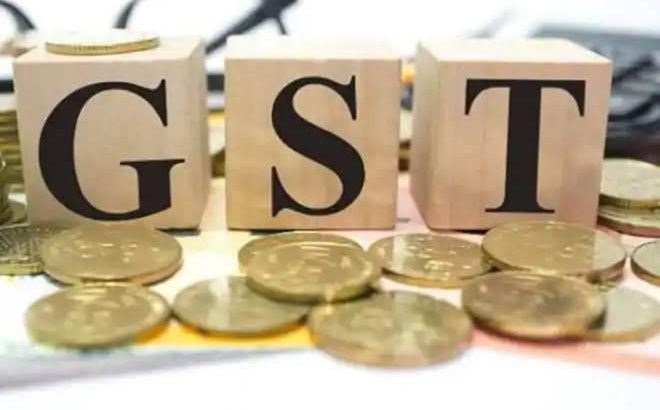Common GST Errors on Input Tax Claims 进项税报销中常见的消费税错误
Input tax claims must be supported with valid documents 进项税报销必须提供有效的证明文件
(Scenario hypothesis) Hi I’m Sarah. I run a beauty salon business Radiance Private Limited that is GST registered. Some of you may think that the documents that you need to keep to support your input tax claims are confusing. Let me now share some tips with you. (场景假设)你好,我是萨拉。我经营一家美容院商业“光辉私人有限公司”,是消费税登记的。你们中的一些人可能会认为,需要保留的支持进项税报销的文件是令人困惑的。现在让我和你们分享一些技巧。
This month I ordered some facial cream from a local supplier who issued a tax invoice. I can’t use this invoice to claim the input tax. Why? This tax invoice is not valid, because: 这个月,我从一家当地供应商那里订购了一些面霜,他们开了一张税务发票。我不能用这张发票申报进项税。为什么?此税务发票无效,是因为:
- It does not show my suppliers GST registration number, the business’s name and address and the GST amount 它没有显示我的供应商的消费税登记号码、企业名称和地址和消费税金额
- Also, the value of sales and the GST have not been converted it’s a Singapore dollars. 另外,销售额和消费税还没有换算成新元。
As this purchase is more than $1,000 (inclusive of GST), we need to ask the supplier to issue a valid tax invoice that has these details: 由于本次采购金额超过1000新元(含消费税),我们需要要求供应商开具一份有效的税务发票,发票内容如下:
- The words “tax invoice” “税务发票”字样
- The suppliers name, address and GST registration number 供应商名称、地址和消费税登记号
- The invoice number and issue date 发票号码和开票日期
- The customer’s name and address 客户的姓名和地址
- The description of the goods and services 商品和服务的描述
- The GST rate 消费税税率
- The total amount payable excluding GST 不包括消费税的总金额
- The GST amount, and 消费税金额,及
- The total amount payable including GST 包括消费税在内的应付总额
If the local purchases are negotiated in foreign currencies, our suppliers have to convert these items of the tax invoice into Singapore dollars: 如果本地采购是用外币进行谈判,我们的供应商必须将这些税票项目转换成新加坡元:
- The total amount payable excluding GST 不包括消费税的总金额
- The total GST payable, and 应支付的消费税税总额
- The total amount payable including GST 包括消费税在内的应付总额
We can only claim input tax on the Singapore dollar equivalent of the GST incurred as stated in the supplier’s invoices. This applies even if we have recorded the Singapore dollar value of the purchases in our accounts at a different exchange rate. 我们只能就供应商发票中所述的新加坡元等价的消费税报销进项税。即使我们以不同的汇率在我们的账户中记录了购买的新加坡元价值,这一点也适用。
I also bought some stationery for my office this month. We can use a simplified tax invoice to support our input tax claims for this purchase because the total amount payable including GST does not exceed $1,000. A simplified tax invoice does not need to show these details: 这个月我还为办公室买了一些文具。我们可以使用简化的税务发票来支持我们的进项税报销,因为包括消费税在内的总应付金额不超过1000新元。简化的税务发票不需要显示以下细节:
- The words “tax invoice” “税务发票”字样
- The customer’s name and address 客户的姓名和地址
- A breakdown of the prices 价格的细目
- A separate GST amount. However the words “price payable inclusive of GST” must still be shown on the simplified tax invoice. 单独的消费税金额。然而,“包括消费税在内的应付价格”字样仍然必须显示在简化的税务发票上。
I am thinking of importing some shampoo from Europe and would like to claim the import GST incurred. 我正在考虑从欧洲进口一些洗发水,并要求支付由此产生的进口消费税。
First, if we took up an import permit with Singapore customs, our company’s name must be stated as the importer in the import permit. We can claim the input tax based on the Singapore dollar amount shown in the import permit. 首先,如果我们和新加坡海关办理进口许可证,我们公司的名字必须在进口许可证上注明为进口商。我们可以根据进口许可证上显示的新加坡元金额报销进项税。
Second, if we import the goods via couriers or air express shipment companies, we can use the tax invoice issued by them to support our import tax claims, instead of using the import permit. 其次,如果我们通过快递公司或空运公司进口货物,我们可以使用他们开具的税务发票来支持我们的进口税报销,而不是使用进口许可证。
Know when input tax needs to be apportioned 知道什么时候需要分摊进项税
It is time to file my quarterly GST return. Out of these expenses incurred by my business, let’s find out when input tax cannot be claimed and needs to be apportioned. We cannot claim input tax on non-business activities such as: 是时候提交我的季度消费税申报表了。从我的商务产生的这些费用中,我们来看看什么时候进项税不能报销,需要分摊。我们不能就下列非经营性活动报销进项税:
- Private or personal activities 私人或个人活动
- Activities with non-business objects in philanthropic, political, patriotic, or public domain 与慈善、政治、爱国或公共领域的非商业目标相关的活动
- Free activities provided without commercial reasons. We can only claim input tax on goods or services, that are used or will be used for our business purpose, and is directly attributable to taxable supplies 无商业理由的免费活动。我们只能对用于或将用于我们的商业目的,并直接归属于应纳税供应品的货物或服务报销进项税
Let’s take a look at James who is claiming reimbursement for his phone bill. James uses his own mobile phone for business and personal calls. My company reimburses James for its mobile phone subscription, even though we cannot determine the portion of business calls that James makes. It will be wrong for my company to claim the input tax in full, as James’s mobile phone is not used for only business purposes. Also the invoice is not issued to my company. Luckily, there is an administrative concession to allow input tax claim when the supply of fringe benefits is clearly contracted in an employee’s name. IRAS will allow us to claim input tax for the expenses provided that: 让我们来看看詹姆斯,他正在报销电话费。詹姆斯用自己的手机打商务和私人电话。我的公司报销了詹姆斯的手机订购费用,尽管我们无法确定詹姆斯拨打的商务电话的比例。我公司全额申报进项税是错误的,因为詹姆斯的手机不只是用于商业用途。发票也没有开给我公司。幸运的是,当附带福利的供应明显以雇员的名义签订合同时,会有行政上的让步,允许进项税报销。税务局将允许我们为以下费用报销进项税:
- The employee is reimbursed, and 雇员得到补偿,并且
- The expenses are recognized as business expenses in the company’s account. 这些费用在公司账上确认为营业费用。
In this case, although my company reimburses James in full, we can only claim input tax on the business portion of the mobile phone expenses which will be computed at 4/7 of the GST incurred. Hence, my company can only claim input tax of $4 on the mobile phone expenses. 在这种情况下,虽然我公司全额偿还詹姆斯,但我们只能在移动电话费用的营业部分报销进项税,计算方式为消费税的4/7。因此,我公司只能在手机费用上申报4新元的进项税。
Another common error is businesses claiming input tax incurred to make exempt supplies. I have an investment holding company Properties Pte Ltd that makes standard-rated supplies from the rental of commercial properties and exempt supplies from the bear rental of residential properties. We pay GST on: 另一个常见的错误是企业为了获得免税供应品而报销进项税。我拥有一家投资控股公司“产业私人有限公司”,该公司从商业地产的租金中生产标准税率供应品,并从住宅地产的租金中获得免税供应品。我们支付消费税:
- The maintenance of the properties, and 产业的保养,及
- general business expenses such as: office rental and utilities 一般商业费用,如: 办公室租金和水电费
We can claim input tax on the maintenance of the commercial properties, since the expense is incurred to make standard-rated supplies. We cannot claim GST on the maintenance of the residential property, as it is incurred to make exempt supplies. For the GST that is incurred to make both taxable and exempt supplies, we can use this formula to calculate the amount of the residual input tax that is attributable to the making of taxable supplies: Residual Input Tax * Value of Taxable Supplies / Value of Total Supplies. 我们可以要求对商业产业的维护报销进项税,因为这是生产标准税率供应品的费用。我们不能就住宅物业的维修报销消费税,因为这是为了提供免税供应品。对于产生的应纳税和免税物资的消费税,我们可以用这个公式来计算应纳税物资产生的剩余进项税额: 剩余进项税额*应纳税物资价值/总物资价值。
For example, the total value of taxable supplies is $10,000, while the total supply is $14,000. Hence, the residual input tax allowable is $196 * $10,000 / $14,000 = $140. 例如,应税物资的总价值为1万美元,而总供应量为1.4万美元。因此,允许的剩余进项税额为$196 * $10,000 / $14,000 = $140。
Do not claim disallowed input tax 不要报销不允许的进项税
Are you aware that input tax incurred on certain expenses is not claimable in all situations? Regulations 26 and 27 of the GST (General) Regulations do not allow these expenses to be claimed as input tax: 你是否知道某些费用的进项税并不是在所有情况下都可以报销的?《消费税(一般)规例》第26及27条不容许将这些开支作为进项税报销:
- Cost and expenses of motor cars 轿车的成本和费用
- Medical expenses, medical and accident insurance premiums, excluding those covered under the Work Injury Compensation Act, or under any collective agreement within the meaning of the Industrial Relations Act 医疗费用、医疗及意外保险费用,但不包括工伤补偿法或劳资关系法所指的任何集体协议所涵盖的费用
- Benefits provided to the family members or relatives of your staff 为员工家属或亲属提供的福利
- Club subscription fees, and 俱乐部订阅费,以及
- Any transaction involving betting, sweepstakes, lotteries, fruit machines or games of chance 任何涉及投注、抽奖、奖券、水果机或碰运气游戏的交易
My company has paid GST on our employees’ medical expenses, medical and accident insurance premiums, maintenance of our delivery vans, and S-Plated company cars that our employees can use for business purposes. We also pay for our employees’ gym and fitness class membership. Can my company claim GST on all of these expenses? Only the input tax on the maintenance of delivery vans can be claimed. The other expenses are specifically disallowed under Regulations 26 and 27. Hence, my company cannot claim input tax on these expenses, even though they are incurred for business purposes. If the employees’ medical and insurance expenses are compulsory to be incurred under the Work Injury Compensation Act or Industrial Relations Act, then my company can claim input tax on these expenses. 我的公司已经为我们的员工支付了消费税的医疗费用,医疗和意外保险费,我们的运货车的维护,和我们的员工可以用于商业目的的S牌的公司汽车。我们还为员工支付健身房和健身班的会员费。我的公司可以就所有这些费用报销消费税吗?不,只有维修运货车的进项税可以申报。根据条例26和27,其它费用是特别不允许的。因此,我的公司不能为这些费用报销进项税,即使它们是为商业目的产生的。如果员工的医疗和保险费用是工伤补偿法或劳资关系法规定的强制费用,那么我公司可以就这些费用报销进项税。
My company also incurred GST on packages purchased from a theme park for a family day. Each staff gets a package free of charge, but has to pay 50% of the cost of the packages for their family members. Can my company claim the GST incurred? My company can claim input tax in full on the packages given free to my staff. However, the input tax incurred on the 50% subsidized packages for the staffs’ family members is considered family benefits and is disallowed under Regulation 26. Nevertheless, we are able to claim input tax on the 50% of the packages charged to family members and will need to account for the corresponding GST as output tax accordingly. 我的公司还为家庭日从主题公园购买的包裹征收消费税。每个员工都可以免费得到一个包裹,但必须为家人支付50%的包裹费用。我的公司可以报销产生的消费税吗?我的公司可以对免费赠送给员工的包裹全额报销进项税。然而,员工家庭成员的50%补贴计划产生的进项税被认为是家庭福利,根据规定26是不允许的。尽管如此,我们可以对向家庭成员收取的50%的包裹报销进项税,并需要将相应的消费税作为销项税报账。
Claiming input tax accurately in the right period 适时准确报销进项税额
Do you know that there are a few common errors that traders usually make when claiming input tax? These errors are: 你知道吗?在报销进项税时,贸易商通常会犯一些常见的错误。这些错误是:
- Claiming input tax in the wrong accounting period 在错误的会计期间报销进项税额
- Calculating input tax based on the total purchase value reported in the GST return 根据消费税报税表申报的总购货价值计算进项税额
First, the input tax should be claimed in the accounting period that tallies with the date shown in the tax invoice or import permit. You can claim input tax on your purchases before your subsequent supply of goods or services. It is not necessary to match the input tax claim for your purchases with output tax charge for the subsequent supply in the same accounting period. 首先,进项税应在与税务发票或进口许可证所示日期相符的会计期间内报销。你可以在随后的货物或服务供应之前报销采购物品的进项税。在相同的会计期间内,没有必要将您购买的产品的进项税额与随后的供应产品的销项税额相匹配。
My company wants to purchase raw materials for a GST registered supplier. We received a quotation from them, and made a deposit on 15th June. The supplier issued us a tax invoice dated 4 Aug upon the delivery of goods. My company claimed input tax in the period where we made payment to the supplier. Is this correct? No, the input tax should be claimed based on the date of the supplier’s tax invoice or import permit, as long as all the conditions for claiming input tax are satisfied. Hence, if my company’s accounting periods are ending Mar Jun Sep and Dec, we can claim the input tax in the GST return for the period covering 1 Jul to 30 Sep. This is the accounting period where we obtained the tax invoice from the supplier 我公司想为消费税注册供应商采购原材料。我们收到了他们的报价,并在6月15日付了定金。供应商在发货后给我们开具了8月4日的税务发票。我公司在付款给供应商期间报销进项税。这是正确的吗?不可以,只要满足所有的进项税报销条件,进项税应根据供应商的税务发票或进口许可证的日期来报销。因此,如果我公司的会计期是3月6月9月和12月,我们可以在消费税申报表中报销7月1日至9月30日期间的进项税。这是我们从供应商那里获得税务发票的会计期。
Second, some businesses may calculate input tax based on the total purchase value reported in the GST return. Is this correct? No, the input tax value should be derived from the GST amount reflected in your suppliers’ tax invoices and import permits, though you have to import zero-rated purchases in the value of taxable purchases for GST reporting, you should not claim input tax on zero-rated purchases, as there is no GST charged. 其次,一些企业可能会根据消费税申报表中报告的总购买价值计算进项税。这是对的吗?不,进项税额应来源于供应商的税务发票和进口许可证中反映的消费税金额,尽管您必须在应纳税采购额中进口零税率的采购,以便进行消费税报告,但您不应就零税率的采购报销进项税额,因为没有征收消费税。
For example, this company has incurred the following standard-rated and zero-rated expenses. The total purchase value is $8,700. They calculated the input tax claimable at 7% of $8,700. Is this correct? No, they should compute input tax based on the GST amount reflected on their suppliers’ tax invoices and import permits. 例如,该公司发生了下列标准税率费用和零税率费用。总购买价值为8700新元。他们计算出的进项税额为8700新元的7%。这是正确的吗?不可以,他们应根据供应商的税单及进口许可证所反映的消费税金额计算进项税。


